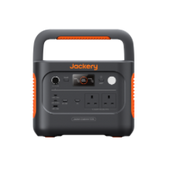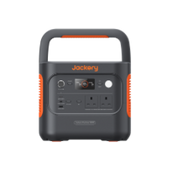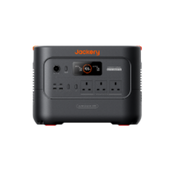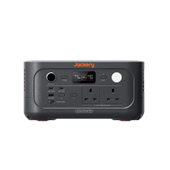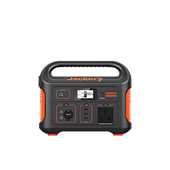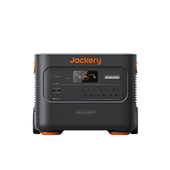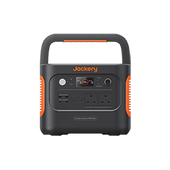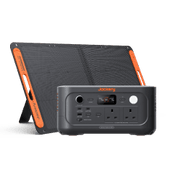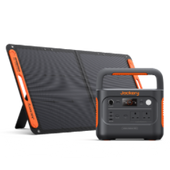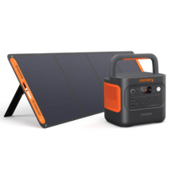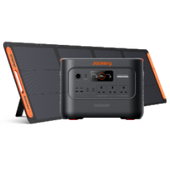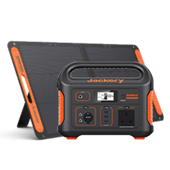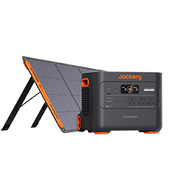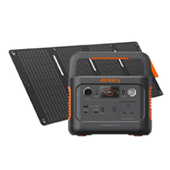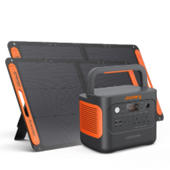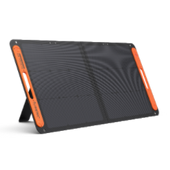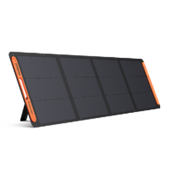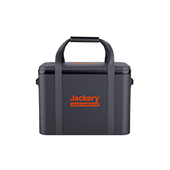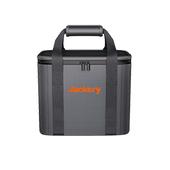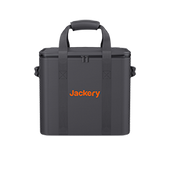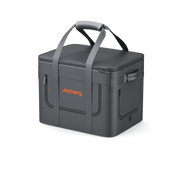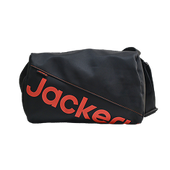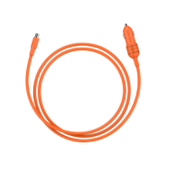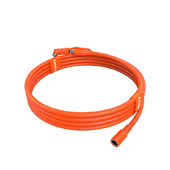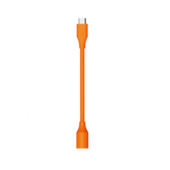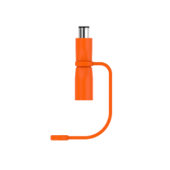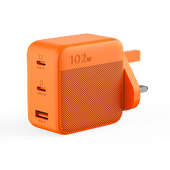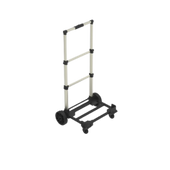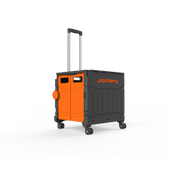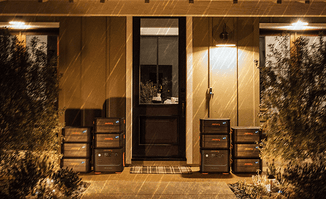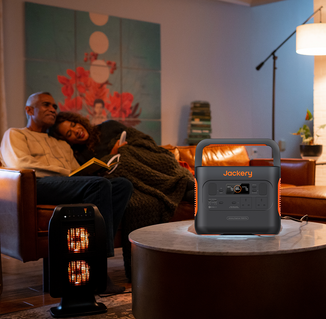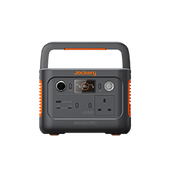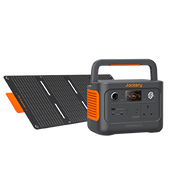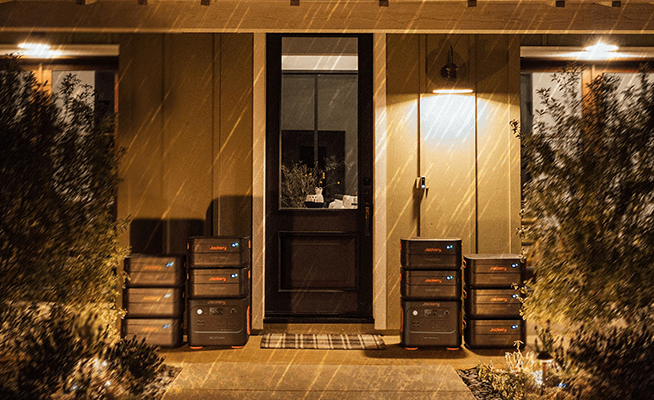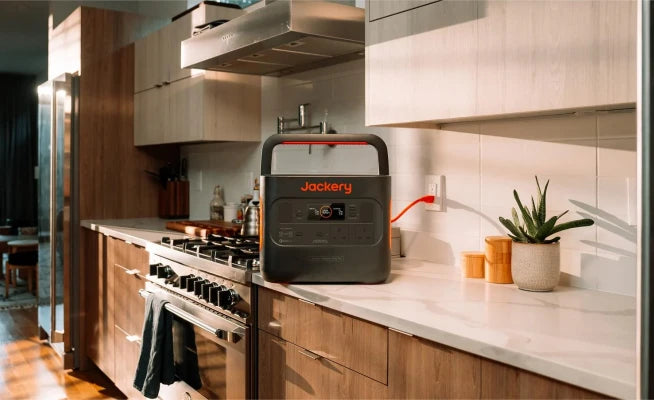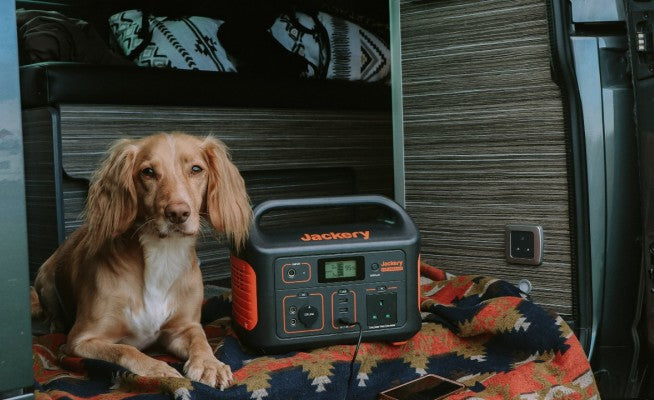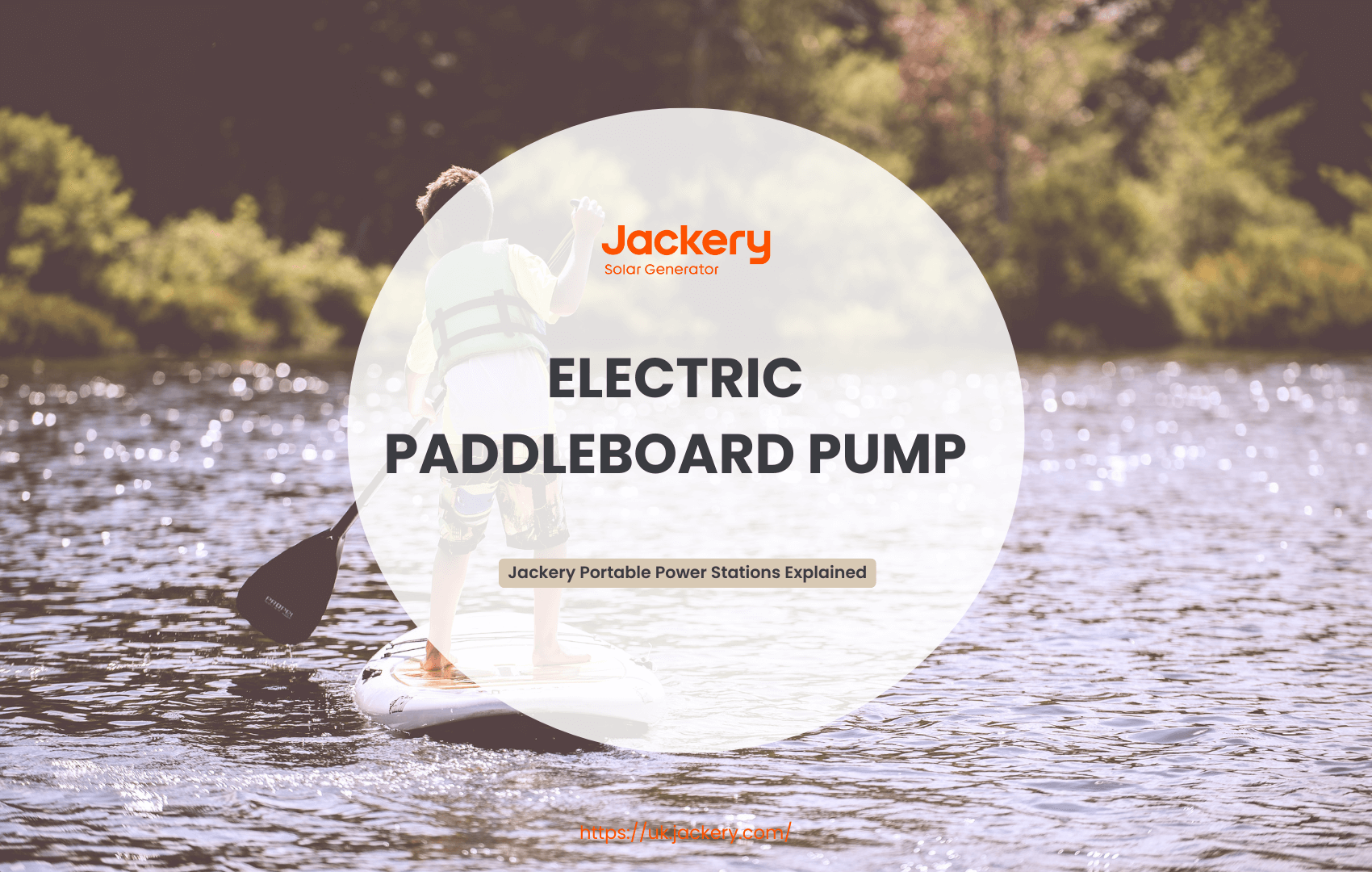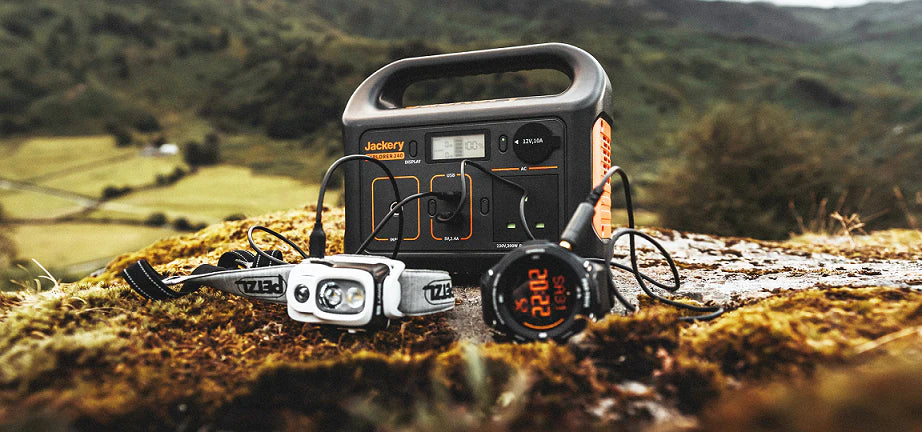Paddleboarding is a flexible water sport rapidly gaining popularity. It combines adventure, relaxation, and fitness. A paddleboard pump is at the heart of this activity, inflating the board to the proper pressure for buoyancy and performance.
However, inflating a paddleboard can be time-consuming, particularly when done manually. Fortunately, an electric paddleboard pump makes the operation quick and simple. Connect the electric paddleboard pump to the inflation valve, and you're ready to go.
In this article, we'll examine how to use an electric paddleboard pump, how much power it consumes, common faults, what to look for when buying, and how it compares to manual pumps.
|
Key Takeaways: |
|
What Is an Electric Paddleboard Pump?
An electric paddleboard pump is a portable, battery-powered, or plug-in device that swiftly and efficiently inflates a stand-up paddleboard. Unlike manual pumps, which need personal effort, it has a built-in motor that provides a consistent air flow, guaranteeing that your paddleboard reaches optimal pressure with minimal exertion.
As a result, it is widely used in watersports, camping trips, and other settings, allowing for easy inflation and deflation of inflatable paddleboards, kayaks, air mattresses, and other items.
How Does an Electric Paddleboard Pump Work?
The core operating principle of an electric paddleboard pump is based on a motor-driven, air pressure conversion mechanism. The detailed operating process is as follows:
Electric Drive: The motor is driven by an internal or external battery or a vehicle power source (12V cigarette lighter).
Air Compression: The motor drives a piston or turbofan, which compresses the outside air and injects it into the SUP through the inflation tube.
Pressure Control: Most electric pumps have a pressure sensor that automatically stops when the SUP reaches a preset pressure (usually 5-15 PSI) to prevent overcharging.
Types of Electric Paddleboard Pumps
Depending on the power source, electric paddleboard pumps can be divided into two main categories:
In-Vehicle Electric Pumps: These are powered by a 12V DC car cigarette lighter port. They offer fast inflation speeds and are suitable for outdoor or long-distance self-drive trips, but their range relies on the vehicle battery.
Rechargeable Electric Pumps: These pumps have a built-in rechargeable lithium battery for independent power supply, eliminating power constraints and making them suitable for outdoor situations without a power source, such as hiking, camping, or short trips.
How to Use an Electric Paddleboard Pump?
Properly inflating and deflating a paddleboard is critical for its longevity and safety on the water. Using an electric paddleboard pump is really straightforward. Here's a step-by-step guide for utilising an electric paddleboard pump.

Step 1: Unfold and Spread the Paddleboard
Find a level, clean area, such as grass or sand, devoid of pebbles and sharp objects. Carefully unfold and set the paddleboard flat. When the paddleboard is fully unfurled, look for any evidence of wear or damage that could impair its performance or safety after inflation.
Step 2: Connect the Electric Paddleboard Pump
Locate the inflation valve near the tail of the paddleboard and remove its cap. It's a small, round opening with a cap. Keep the cap securely. Take the electric paddleboard pump's hose and align its end with the valve.
Gently tighten it and securely fit it onto the valve. This connection must be airtight to prevent air from escaping during inflation. Once completed, check that the connection is secure. If it comes loose easily, reconnect it and ensure it's tighter.
Step 3: Start Inflating
After firmly attaching the electric paddleboard pump to the paddleboard, you may start inflating. If your electric paddleboard pump has a digital display, set it to the manufacturer's recommended PSI, usually between 12 and 15 PSI, for peak performance and stability. If you're using a regular electric paddleboard pump, keep an eye on the pressure gauge while you inflate. Pumps with automatic shutdown will stop inflating once the specified PSI is reached.
Step 4: Disconnect the Electric Paddleboard Pump
When the paddleboard is completely inflated, carefully and slowly remove the pump hose from the valve. Be gentle to prevent excessive air leakage and pressure loss. After withdrawing the pump hose, secure the valve cap back in place. A correctly secured valve cap maintains the paddleboard's air pressure and structural integrity. The valve cap should be tightly tightened, but not overtightened, as this can damage the valve threads.
Step 5: Final Inspection
Once the paddleboard is inflated and the valve is secured, perform a final inspection. A well-inflated paddleboard will be very strong and retain its shape under pressure, so feel the surface and edges of the paddleboard to see if they feel solid, with no signs of bulges or unusual bending.
Does the Electric Paddleboard Pump Consume a Lot of Electricity?
Electric paddleboard pumps surely waste electricity because they run on belt power. The pump's power consumption is mainly determined by its power and operation time. Higher power uses more electricity per unit time.
Alternatively, the longer the pump operates, the more electricity it consumes. Inflating a single paddleboard, for example, can take several minutes to over ten, and inflating numerous devices simultaneously or operating the pump for extended periods will use electricity. If a 200W electric paddleboard pump runs for an hour, it will burn around 0.2 kWh.

Does an Electric Paddleboard Pump Consume a Lot of Electricity?
Electric paddleboard pumps typically have a power draw between 100W and 300W. This means the pump consumes approximately 0.1-0.3kWh per hour. If powered by a 518Wh Jackery Explorer 500 portable power station, the pump can operate continuously for approximately 1.7-5.1 hours. Using a 288Wh Jackery Explorer 300 Plus portable power station, the electric paddleboard pump can operate continuously for approximately 0.9-2.8 hours.
Comparing it to other devices can provide a more intuitive understanding of whether the electric paddleboard pump is sufficient:
|
Equipment |
Watts |
Power Consumption (1 Hour) |
|
Electric Paddleboard Pump |
100W-300W |
0.1-0.3 kWh |
|
Refrigerator |
100W-200W |
0.1-0.2 kWh |
|
Electric Kettle |
1500W-2000W |
1.5-2 kWh |
|
Air Conditioner |
700W-1000W |
0.7-1 kWh |
The data in this table is for reference only.
As can be seen, the power consumption of an electric paddleboard pump is similar to that of low—and medium-power appliances like refrigerators but significantly lower than that of high-power appliances like electric kettles and air conditioners. Due to the short duration of a single use, the actual power consumption of an electric paddleboard pump is relatively low.
Tips for Outdoor Power Supply of an Electric Paddleboard Pump
Although electric paddleboard pumps are low-power devices, it is still vital to be careful of power consumption when used outside. Here are some helpful methods for operating an electric paddleboard pump outside:
Tip 1: When charging or operating the pump, keep it in a cool, well-ventilated area to minimise overheating and other safety hazards.
Tip 2: To avoid battery drain, start the car's engine before using the cigarette lighter to power the pump.
Tip 3: Select a high-capacity outdoor power supply (such as the Jackery Explorer 500/300 Plus) and confirm that the output power and voltage meet the needs of the electric paddleboard pump. A solar panel can provide additional electricity for extended outdoor activities.
How Do You Power an Electric Paddleboard Pump Outdoors?
Choosing a Jackery Portable Power Station to power an electric paddleboard pump is a popular and practical solution. A Jackery Portable Power Station is a self-contained unit designed for easy transport. Unlike a traditional generator, it's lightweight and has a handle, making it simple to carry from your car to the beach or lake. This is a huge advantage over being tethered to your vehicle's 12V cigarette lighter or having to hand-pump your board.
Jackery Portable Power Stations have multiple output ports, including a standard AC outlet (the same kind you have at home) and DC and USB ports. This means you can plug in your paddleboard pump, which typically runs on an AC outlet, without needing a separate inverter or adapter. You can also charge your phone, camera, or other electronics simultaneously.
Unlike a gas generator, a Jackery Portable Power Station runs silently and produces no fumes. This is ideal for a peaceful day on the water and is safe for use in a car, tent, RV, caravan, or other enclosed spaces.
|
|
Jackery Explorer 500 |
Jackery Explorer 300 Plus |
|
Standard Paddleboard Pump (100-300W) |
1.4-3.9H |
0.8-2.1H |
|
Mobile Phone (29W) |
25 Charges |
13 Charges |
|
Portable Fridge (90W) |
4.2H |
2.4H |
|
Drone (90W) |
4.2H |
2.4H |
|
Flashlight (5W) |
28.3H |
15.7H |
Jackery Explorer 500
The Jackery Explorer 500 is an excellent choice for powering an electric paddleboard pump and other electronics outdoors because it strikes an ideal balance between power, portability, and versatility.

Sufficient Power for the Task: The Explorer 500 has a 518Wh (watt-hour) battery capacity and can deliver a continuous output of 500W. Most electric paddleboard pumps, often between 100W and 300W, require significant power and have a surge (or peak) wattage when they first turn on. The Explorer 500's 1000W surge capacity is enough to handle this initial power draw without tripping or shutting down.
Versatility for More Than Just Pumping: The "and more electronics" part is where the Explorer 500 truly shines. It has a variety of output ports, making it a central power hub for your outdoor adventures:
|
AC Outlet |
This is where you plug in your paddleboard pump. It's a standard wall outlet, so you don't need special adapters. You can also use it for a small blender, a laptop, or a mini-fridge. |
|
USB-A Ports |
Three USB-A ports charge phones, cameras, drone batteries, and other small electronic devices. |
|
DC Port & Car Port |
These are useful for powering devices that typically run on a car's 12V outlet, like a portable cooler or a tire inflator. |
Portability: At around 14.1 lbs (about 6.4 kg), the Explorer 500 is very portable for its capacity. It's not so heavy that it's a burden to carry from your car to the water's edge, and its compact size and solid handle make it easy to transport and store in your trunk or RV.
Off-Grid Capability with Solar: If you will be out for a full day or a multi-day trip, the Explorer 500 can be paired with a Jackery SolarSaga 100W solar panel (sold separately). This allows you to recharge the solar power station, providing a truly off-grid power solution. You can pump up your board, enjoy your time on the water, and let the sun replenish the battery for your subsequent use.
Quiet and Clean Operation: Unlike a noisy, fume-emitting gas generator, the Jackery Explorer 500 operates silently. This is crucial for a peaceful day at the beach or a quiet camping trip. It's also a clean power source with no emissions, making it safe for use in a tent, car, or other enclosed spaces.
Jackery Explorer 300 Plus
The Jackery Explorer 300 Plus is a compelling choice for powering an electric paddleboard pump and other electronics outdoors due to its portability, power output, and battery longevity.

Powering an Electric Paddleboard Pump: An electric paddleboard pump typically operates on 12V DC power, often with a car cigarette lighter plug. The Jackery Explorer 300 Plus has a 12V DC carport output, the perfect connection for this pump. While specific pump power draw can vary, a power station with a continuous 300W production, like the 300 Plus, is generally sufficient.
It's important to note that you will need to verify the power requirements of your specific paddleboard pump to ensure it falls within the 300W limit of the Jackery. For example, some pumps may have a surge peak that exceeds the 600W surge peak of the Jackery, though the continuous draw should be within range.
The Explorer 300 Plus's 288Wh battery capacity is also a key factor. Based on a typical paddleboard pump's power consumption, this capacity should be enough to inflate at least two paddleboards on a single charge, giving you the flexibility to inflate multiple boards or provide a safety cushion for other electronics.
LiFePO4 Battery: The Lithium Iron Phosphate (LiFePO4) battery is a significant upgrade. It offers a longer lifespan of 3,000 cycles to 80% capacity compared to the 500 cycles of previous models. This means it will last much longer, even with frequent use.
Portability: Weighing only 8.27 lbs and featuring a folding handle, it's light enough to carry in a backpack for day trips or camping easily.
Charge Time: It can be fully recharged in just 2 hours using a wall outlet, a significant advantage for quick turnarounds between adventures. It also supports charging via a 12V car adapter or a compatible Jackery SolarSaga solar panel.
Durability Features: The unit is made with fire-retardant material and is designed for shock resistance to handle the bumps and drops of an outdoor environment. It also operates in a wide temperature range, from 14°F to 113°F (-10°C to 45°C).
How to Choose a Suitable Electric Paddleboard Pump?
Choosing the right electric paddleboard pump is as important as selecting it. The right pump can save time and energy and ensure your paddleboard maintains peak performance. Therefore, when selecting the right electric paddleboard pump, consider the following factors:

Maximum PSI
Ensure the electric paddleboard pump can reach the required PSI pressure on your paddleboard without causing stress. The recommended pressure is typically between 12 and 15 PSI for most inflatable paddleboards.
Portability
Lightweight and compact electric paddleboard pumps are easier to carry and store. Frequent travellers or outdoor enthusiasts tend to choose these models.
Durability
Because paddleboarding involves water and outdoor activities, a sturdy electric paddleboard pump should withstand the wear and tear of regular water contact. For increased wear resistance, choose an electric paddleboard pump made of high-quality materials, such as high-pressure rubber or reinforced plastic.
Compatibility
Ensure the electric paddleboard pump is compatible with your inflatable paddleboard's valve system (usually a Halkey-Roberts valve). Most electric paddleboard pumps include various nozzle adapters to ensure compatibility with multiple valves.
Noise Level
Consider a quiet electric paddleboard pump if you're inflating your paddleboard at the beach or in another calm setting. This helps to prevent disturbing others or wildlife, resulting in a more enjoyable encounter.
Smart Features
Today's electric paddleboard pumps also include advanced functions such as:
Auto-Shutoff: Turns off when the appropriate PSI is reached, preventing overinflation.
Cooling System: Keeps the pump from overheating during operation, particularly while inflating many boards.
Digital Display: A clear digital PSI display allows you to monitor pressure and alter settings.
Standard Troubleshooting for Electric Paddleboard Pumps
Problems with an electric paddleboard pump can be irritating, especially if you're eager to enter the water. Even the greatest electric paddleboard pumps can occasionally malfunction. Here are some frequent electric paddleboard pump issues and solutions:

Problem 1: Leakage
If you observe air leaks from your electric paddleboard pump, it could be caused by a slack hose connection, deteriorated seals, a faulty valve inside the pump, or a broken or pierced air line.
Solution: Inspect all connections and hoses for tightness. If the seals are degrading, replace them with equivalent ones. If the pump's check valve malfunctions, it should be disassembled, cleaned, or replaced. A little silicone lubricant enhances the seal for broken or pierced air lines.
Problem 2: Overheating
If your electric paddleboard pump overheats, it's likely due to extended operation, poor heat dissipation, or excessive load.
Solution: Turn off the power, suspend use, and allow the pump to cool for about 20-30 minutes. If overheating persists, check the heat dissipation vents for dust. Clean the vents with a soft brush or compressed air. Adjust the pressure to a reasonable range if overheating occurs due to excessive load.
Problem 3: Shortened Operating Time
If you notice a decrease in operating time while using the electric paddleboard pump, this is likely due to battery ageing, heavy use, or prolonged inactivity.
Solution: It is recommended that the battery be fully discharged and then fully charged 2-3 times. If the battery life is short, even less than 50% of its original value, replace it. If the battery is over two years old, replace it with a new one.
Problem 4: Digital Display Is Not Working
If the electric paddleboard pump's digital display fails, it usually results in no display, flashing values, or unresponsiveness. This is likely due to a bad power connection, screen damage, or a software issue.
Solution: Check the connection cord between the display and the main control board for loose contacts, then reconnect or secure the connections. If the display is damaged or the lighting fails, replace the display module with the same model. Try rebooting the device or returning to factory settings. If this does not work, contact customer care to get it repaired.
Is an Electric Paddleboard Pump Better Compared to a Manual One?
Faced with a dazzling array of electric and manual pumps on the market, many paddleboard enthusiasts are faced with a dilemma: Is an electric paddleboard pump truly better than a manual pump? The following comparative analysis will help you make a rational choice.
Efficiency
A motor powers electric paddleboard pumps and inflates automatically with a single button, removing the need for user intervention. Their high speed and efficiency significantly shorten inflation time. Some types include preset pressures and automatic shutdown.
Manual paddleboard pumps rely entirely on manual labour, which is inefficient and time-consuming. Prolonged operation can easily cause wrist pain, resulting in a bad user experience, particularly in hot temperatures or when physically weary.
Portability
Electric paddleboard pumps require a power supply, which limits their application in areas without electricity. They are also relatively large, necessitating more storage space.
Manual paddleboard pumps do not require a power source, are lightweight and portable, and may be readily packed into a bag.
Economical
Electric paddleboard pumps are often more expensive than manual pumps. They require constant maintenance of components such as the motor and battery, which raises long-term costs.
Manual paddleboard pumps are inexpensive, simple, and maintenance-free. They are an affordable solution for casual users or those on a tight budget.
User Experience
Electric paddleboard pumps are simple to operate and ideal for consumers seeking convenience and comfort, particularly for family activities or individuals with limited physical strength.
Manual paddleboard pumps are high in physical demand, necessitating repeated exertion during high-pressure episodes, which can be exhausting.
|
Type |
Advantage |
Disadvantage |
|
Electric Paddleboard Pump |
Time and effort saving Precise pressure control Versatile |
Requires a power source Larger and heavier High price High risk of failure |
|
Manual Paddleboard Pump |
No power source required Lightweight and portable Affordable High reliability |
High physical effort Cannot accurately control pressure Low efficiency |
In summary, electric and manual paddleboard pumps have advantages and disadvantages, so choose the one that best meets your needs. Frequent outdoor travellers favour an electric paddleboard pump because of its efficiency and labour-saving capabilities. A manual pump is a fantastic option for individuals on a budget who use their paddleboard occasionally.
FAQs
The following are frequently asked questions about the electric paddleboard pump.
1. Are electric pumps suitable for paddleboards?
Yes. Electric pumps can inflate to the necessary pressure faster than manual pumps, allowing you to spend more time enjoying the water. Furthermore, electric pumps provide pressure settings and auto-off features, allowing users to easily select target pressures based on their usage circumstances without constantly monitoring the pump to ensure the correct pressure is achieved.
2. What are the advantages of electric paddleboard pumps?
One of the most significant advantages of electric paddleboard pumps is that they save time and effort. They also feature precise PSI settings, ensuring the ideal firmness is achieved. Furthermore, many electric paddleboard pumps have a pressure gauge and an automatic shut-off function to prevent overinflation.
3. What is the best electric paddleboard pump?
According to InflatableBoarder, the best electric paddleboard pumps of 2025 are the following:
Outdoor Master Shark III Pump
Swonder Seawolf S20Li
iRocker Electric SUP Pump
Honu E-Pump
Outdoor Master Shark II Pump
Retrospec Weekender Electric Pump
Nixy Ventus Electric Pump
Outdoor Master Chachalot 2S
Sea Gods Battery Electric Pump
Gili 12v Electric Pump
4. What psi should I pump my paddleboard to?
Generally, a paddleboard inflation pressure of 15-22 pounds per square inch (PSI) is recommended. This ensures your paddleboard is at the desired firmness for optimal stability without the hassle of inflating the board or the friction of a valve when deflation occurs.
5. How long does it take to inflate a paddleboard?
Inflating a paddleboard using an electric pump generally takes 5 to 10 minutes. However, a more powerful air pump will allow you to inflate the paddleboard quickly.
Final Thoughts
An electric paddleboard pump is fast, convenient, and highly accurate, making it a must-have tool for enthusiasts. While it requires some power to operate, it's lower than air conditioners and electric kettles. Therefore, with a portable power bank like the Jackery Portable Power Station, the pump can operate outdoors without a power source.



